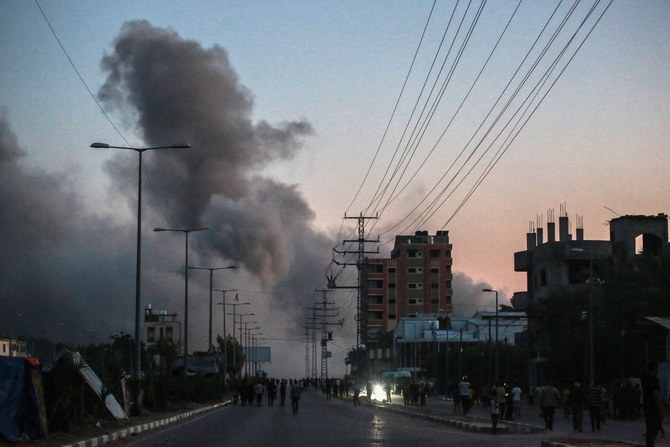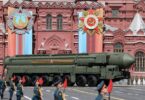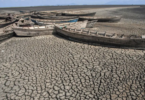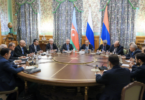Kerry Boyd Anderson
One does not have to look hard to find warnings about a third world war or some form of apocalypse. There are warnings from military strategists, diplomats, historians and politicians who fear a new global war. Scientists warn of the worsening impacts of climate change. Medical experts warn about the next pandemic. The World Bank warned earlier this year that, “beyond the next two years, the outlook is dark” for the global economy.
Dire predictions can feel overwhelming or improbable, which can make it easy to ignore or scorn them. Such warnings can also lead to overreactions when people take them too far. However, all of these responses can be unhelpful at best and dangerous at worst. We need nuanced approaches that account for the complexity of our world and take these warnings seriously, while also remembering that there is a long history of catastrophic predictions that did not come true — sometimes because capable leaders responded to risks with wisdom.
In a recent article in the Texas National Security Review, Philip Zelikow, a historian with extensive experience in the US government, provided the type of informed warning that world leaders should take seriously. “We are in an exceptionally volatile, dynamic, and unstable period of world history,” he wrote. “During the next two or three years, the situation will probably settle more durably in one direction or another: wider war or uneasy peace. There is a serious possibility of worldwide warfare.”
There are many valid reasons to support the idea that we are living through a particularly risky time. The global order is transitioning from the unipolar, US-dominated period that followed the end of the Cold War to something different, which is likely to diffuse power to multiple global and regional countries or alliances.
Russia and China are actively pushing to change the global order that was established after the Second World War and particularly to undermine US leadership. Russia’s invasion of Ukraine, a sovereign state, was a major attack on postwar global principles. At the same time, a substantial part of the US political base, led by Donald Trump, is questioning some of the basic assumptions that have underpinned US foreign policy and leadership for the last several decades.
The weakening global order contributes to several key conflicts, which in turn further erode the global order. The extreme nature of the war in Gaza violates many modern humanitarian principles and intensifies the risks of a broader regional war. The Middle East sits at the crossroads of cultural, economic, religious and strategic interests, and war in the region tends to affect multiple other parts of the world. The war in Ukraine carries potentially severe risks that could extend well beyond Eastern Europe. Parts of Africa — especially the Sahel — are experiencing increased political instability and violence, including looming famine in Sudan.
Other trends act as catalysts that intensify all of these political and security risks. Climate change supercharges old risks and creates new ones. Global demographics are deeply unbalanced, as most wealthier countries have aging populations while some poorer countries — primarily in Africa — have growing, young populations. Technological advances — including modern communication technologies, artificial intelligence, armed drones and much more — shape risks in ways that are difficult to fully understand and predict.
So, it does appear that the world is going through a tough time and faces very significant risks. However, this is not the first time that humans have experienced global volatility. As Zelikow noted in his article, for example, the US has faced a “set of powerful adversaries in a rapidly changing and militarized period of history” before — during the run-up to the Second World War and again during the early Cold War period. While the US could not prevent the Second World War, it used the postwar opportunity to help rebuild a more peaceful world for much of the planet’s population. The US and the Soviet Union avoided the greatly feared nuclear war, despite some frighteningly close calls.
Disaster is not inevitable. Diplomacy can sometimes prevent conflict. Governments can sometimes choose to pull back from the brink of broader war. For example, international pressure and other factors ended the 1999 Kargil conflict before it could escalate to a worse war between India and Pakistan. Despite years of tensions over Taiwan, China and the US have so far avoided war. International efforts helped to contain the 2003 SARS outbreak, which could have been far worse. International cooperation still has the potential to address climate change.
We should also remember that, while the world faces escalating risks, many things have gone well. Global poverty has massively declined. Hunger and malnourishment declined for decades before starting to increase again in recent years. Global life expectancy has more than doubled since 1900. Medical advances have reduced the spread of infectious diseases, brought down maternal and infant mortality and helped people live better for longer. Modern technologies have connected people and improved lives in many ways. The last few decades have seen advances in political freedoms, women’s rights, religious and racial minorities’ rights and more, even if some of them now seem to be under threat.
Today’s leaders should take seriously the warnings issued by experts who are careful and precise. Predictions of catastrophe do not have to come true if leaders take wise decisions based on high-quality information and analysis. History includes examples of times when people avoided disaster, but it also includes cases in which disasters occurred — a sobering reminder for today.







